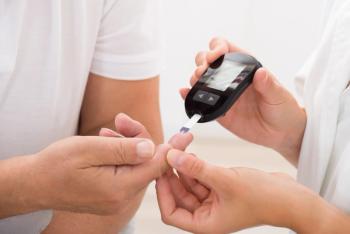
Questions are the answers
How do we empower patients who do not want drug therapy to take their routine medications? Actually, one simple tweak can make all of the difference. We tell them ‘why’ they are taking the medication.
In his book, “Awaken the Giant Within,” Tony Robbins talks about how to make lasting change in any area of your life. He states: “I believe that 20% of any change is knowing HOW and 80% of that change is knowing WHY.” This principle is absolutely imperative, especially in order to encourage behavioral change in our patients.
As healthcare professionals, we would all like to see our patients compliant, taking their medications as prescribed and reaching therapeutic goals. Patients may not understand ‘why’ they are expected to continue their medication and this is where the pharmacist can have a huge impact.
In our daily pharmacy encounters with patients, we uncover many who are noncompliant. Often these patients stop taking their medication due to a bothersome side effect such as dizziness, forgetfulness, or even fatigue from a large pill burden. At Kings Pharmacy, we conduct routine blood pressure screenings and counsel patients on the goals to reduce their cardiovascular risk. Many of the patients we serve do not want to take medication and ask for advice on how to avoid long-term treatment with a drug. However, if they cannot control their blood pressure through lifestyle changes, a prescription can prove to be lifesaving.
Help noncompliant patients
How do we empower patients who do not want drug therapy to take their routine medications? Actually, one simple tweak can make all of the difference. We tell them ‘why’ they are taking the medication. Think about it. If you tell a patient to avoid drinking while taking metronidazole, they may still have a drink that Friday night. But if you tell them ‘why’-it will cause severe nausea and vomiting if you have any alcohol-I guarantee they will abstain. The same principle goes for adherence. Telling patients to take their medication at the same time every day may not be enough to maintain long-term compliance. Explaining that controlling your blood pressure can slash the risk for stroke and heart attack will give the patient the motivation to continue taking that medication.
For example, I had one patient who was on three blood pressure medications and was only taking two of them. Her blood pressure was 130/80 and she was not diabetic. I inquired about the water pill that she was admittedly skipping every day. She explained that she thought her blood pressure was being controlled with two medications and didn’t want it to drop too low with the addition of the water pill. I explained to her that sometimes three different medications are needed if two do not bring the blood pressure down enough. Those three medications all work differently in the body to normalize the blood pressure, reducing cardiovascular risks. A metaphorical light bulb went off and she mentioned twice during that counseling session that the way I explained it made her realize that she should be taking all three medications.
Link short-, long-term goals
The explanation of ‘why’ bridges the link between the short term (daily blood pressure pill) with the long term (avoiding stroke and heart attack). We can integrate this justification in our counseling sessions to advocate for compliance.
The ‘why’ is very important for other reasons. Without being informed of what to expect when taking new medications, patients have to figure it out for themselves. In this way, cultural competency plays an important role because our patients have different backgrounds and perceptions of health. Often patients are not told that a medication will have to be taken every day to maintain the positive results seen upon initiation of the treatment. Another patient who had been coming to my blood pressure monitoring program for several years was still not compliant despite years of sporadic counseling. It wasn’t until I asked the appropriate questions that I discovered that she feared her blood pressure going too low. We spend a significant amount of time talking about lowering blood pressure in order to decrease the risk of complications. However, we do not address the benefit of blood pressure being even lower than 120/80 and that it is only when blood pressure falls below 100/50 mm Hg that there is concern about it being too low.
We often discuss “too low” in regard to diabetes but may neglect to do so with other disease states. The patient’s neighbor had warned her that if blood pressure goes too low it could be dangerous. Upon checking her blood pressure one day, she saw that her systolic number was 113 mm Hg. She was so nervous that she not only stopped taking her medications but also consumed salt to raise it. Since then, she had her blood pressure checked by our student pharmacists several times and it was always borderline or above. This incident was never mentioned even though the importance of compliance was often discussed.
Once her barriers were identified, I was able to appropriately counsel her on the importance of compliance and what to expect. She walked away knowing her goals and when to be concerned about the pressure being too low. She also learned not to get medical advice from friends, family, or neighbors.
The best way for patients to know that they can turn to us for accurate and individualized counseling is through our communication. Understanding a patient’s belief system can make that 80% ‘why’ work to our benefit to influence long-term change. Explaining that 80% makes our efforts 100% worthwhile.
Newsletter
Pharmacy practice is always changing. Stay ahead of the curve with the Drug Topics newsletter and get the latest drug information, industry trends, and patient care tips.































































































































































